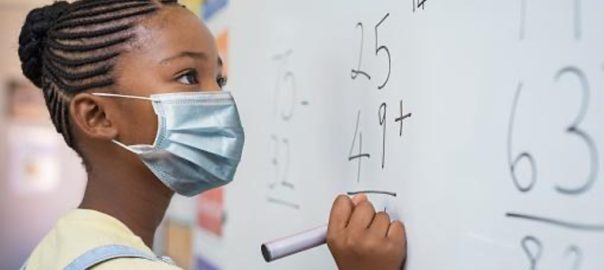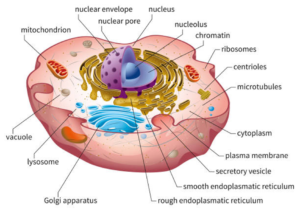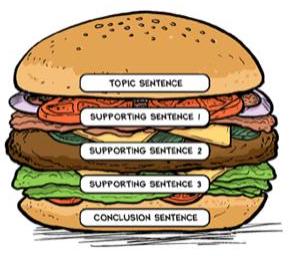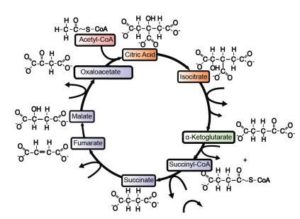Key Concepts:
- Educator’s math anxiety and beliefs about their students’ ability to learn math can impact their students’ math performance
- Caregivers’ (parents, guardians, etc…) views and anxiety about math can impact their children’s math attitudes and achievement (Silver et al., 2021).
Math Anxiety
Many adults feel a rush of adrenaline and discomfort when required to perform math in their daily lives. It is often easier to open the calculator on our smartphones than to estimate or mentally calculate the cost of an item after taxes or a sale discount. If we feel the need to defend our actions to an observer, we may nonchalantly announce, “I’m bad at math,” with a careless wave of the hand, as though to brush away the sentiment. Over 90% of adults have some level of math anxiety (Blazer, 2011,) which may lead them to avoid math and dismiss its importance.
In addition to impacts on your own life, your feelings about math can affect learners around you. Whether you are an educator or caregiver, your attitudes about math can impact the math stress and success of the students who observe your interactions with math.
Your Beliefs Impact the Learners in Front of You
Several studies explore the myriad ways in which adults’ beliefs about math can impact learners of various ages. While a teacher or caregiver’s math anxiety can impair students’ math performance, there are also perceptions about math that can mitigate that effect. Each of the studies below asked about other beliefs that exacerbate or mitigate the effect of adult math anxiety on student learning.
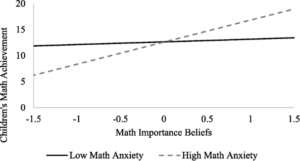
One study hypothesized that the math anxiety of female teachers would negatively impact their elementary students’—especially girls’—math achievement (Beilock et al., 2010). They tested this hypothesis by measuring the students’ ability in the first and last few months of the school year, assuming that teacher anxiety would have an effect on students’ beliefs only after spending the school year teaching them. As predicted, the researchers found that there was no significant relationship between teacher beliefs and student performance in the beginning of the year. However, by the end of the school year, increased teacher math anxiety correlated with lower math achievement for the girls, but not the boys, in the classroom. Luckily, when controlling for the girls’ gender ability beliefs (i.e. the belief that boys are better at math,) the impact of teacher math anxiety disappeared. In other words, when girls hold the belief that they are equally as capable as the boys in math, teachers’ math anxiety does not negatively impact the girls’ performance.
A similar study examined the effect of teacher math anxiety on adolescent students and found that teacher anxiety was negatively correlated with performance of their students (Ramirez et al., 2018). Regardless of gender of teacher or student, higher teacher math anxiety led to lower GPA. Interestingly, students’ perceptions of their teacher’s fixed mindset beliefs partially mediated the relationship between teacher anxiety and student achievement. A fixed mindset belief holds that ability is inherent and cannot be changed by learners. In contrast, a growth mindset asserts that effort and practice can improve ability. In the context of this study, students perceived teachers who utilized less process-oriented teaching practices as having a fixed mindset.

A new study examined the relationship between math achievement in early childhood and the math anxiety of their caregivers (Silver et al., 2021). This longitudinal study investigated beliefs about the importance of math, in addition to math anxiety and discovered some complex relationships. Caregiver beliefs about the importance of math did predict the math performance of their children; children whose caregivers believed math was more important scored higher. Unlike the research on the effect of teacher math anxiety, caregiver math anxiety was not predictive of the children’s math abilities, at this young age. Interestingly, there was an interaction between caregiver math beliefs and math anxiety (shown in the graph on the right). Those with low math anxiety (solid line), did not greatly impact their children’s math achievement, regardless of the caregivers’ beliefs about the importance of math. Caregivers with high math anxiety (dotted line), on the other hand, impacted their children’s math achievement differently, depending on the caregivers’ beliefs about the importance of math. The children of those with high math anxiety and low importance beliefs had decreased math achievement, while the children of those with high math anxiety and high math importance beliefs had increased math achievement. In other words, if you are a caregiver of a young child, it is okay to have math anxiety, as long as you also believe math is important for your child to learn.
Your math anxiety can impact your children’s/students’ math achievement, but it is not the only aspect of your beliefs about math that can have an effect. You will positively affect a learner’s math achievement when you believe that people can improve their math skills, that people have an equal ability to learn math, that math is important, and that the process of solving math problems is valuable. In addition, there are a few powerful strategies that can help you boost learners’ math performance.
Strategies
- Consider how you might be communicating (explicitly or implicitly) your attitudes about math and math learning.
- Express positive beliefs about math and demonstrate positive uses.
- Work to neutralize gender ability beliefs in yourself and children/students. Dispel harmful misconceptions stemming from gender assumptions and fixed-mindset beliefs.
- Place more emphasis on process-oriented teaching practices (as opposed to correct answers and computational speed.)
- Use a variety of assessments, technology, manipulatives, and real-life or concrete examples.
- Other strategies for educators, students, and caregivers: Strategies for Reducing Math Anxiety
Bibliography
- Beilock, S. L., Gunderson, E. A., Ramirez, G., & Levine, S. C. (2010). Female teachers’ math anxiety affects girls’ math achievement. Proceedings of the National Academy of Sciences, 107(5), 1860-1863.
- Blazer, C. (2011). Strategies for Reducing Math Anxiety. Information Capsule. Volume 1102. Research Services, Miami-Dade County Public Schools.
- Ramirez, G., Hooper, S. Y., Kersting, N. B., Ferguson, R., & Yeager, D. (2018). Teacher math anxiety relates to adolescent students’ math achievement. Aera Open, 4(1), 2332858418756052.
- Silver, A. M., Elliott, L., & Libertus, M. E. (2021). When beliefs matter most: Examining children’s math achievement in the context of parental math anxiety. Journal of Experimental Child Psychology, 201, 104992. https://doi.org/10.1016/j.jecp.2020.104992
